Oliver Glasner’s Wolfsburg welcomed Florian Kohfeldt’s Werder Bremen on the 13th Bundesliga match-day. While Wolfsburg ended their losing streak a week ago in Frankfurt, Werder Bremen were without a win in the last six Bundesliga games before this game. Nevertheless, both sides are interesting to watch under their current head-coaches and could both be ranked higher in the league according to their xPoints values.
The following tactical analysis will explain why Werder Bremen could win the game 3-2 despite Wolfsburg’s well structured positional play.
Lineups and formations
Wolfsburg deployed their typical 3-4-3 system under Glasner. With their narrow wingers occupying the half-spaces and being positioned between the opposition midfield and defence they enabled the wing-backs to push high up the pitch.
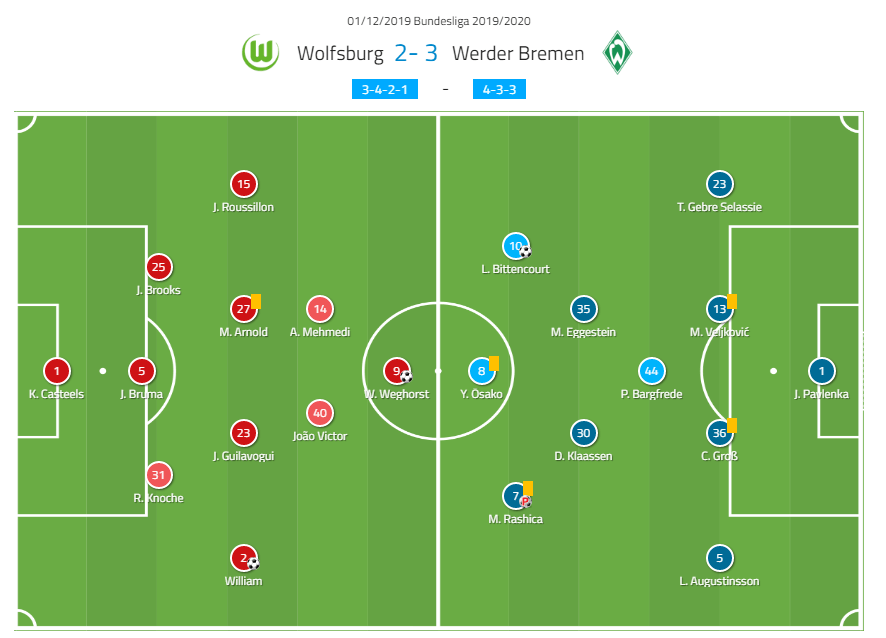
Werder Bremen, on the other hand, lined up in a 4-3-3 formation. Whereas their midfield three comprised of a single pivot and two advanced midfielders in possession, it changed to a double pivot and one advanced midfielder during the defensive phase. On the single-pivot position Philipp Bargfrede replaced Nuri Sahin to lend his side more defensive stability.
Wolfsburg’s positional play
In possession, Wolfsburg set up in a 3-4-3 with a box midfield (two defensive and two advanced midfielders) and striker Wout Weghorst up front. As one can see in the graphic below, their midfielders positioned themselves rather narrow while the wing-backs provided width.
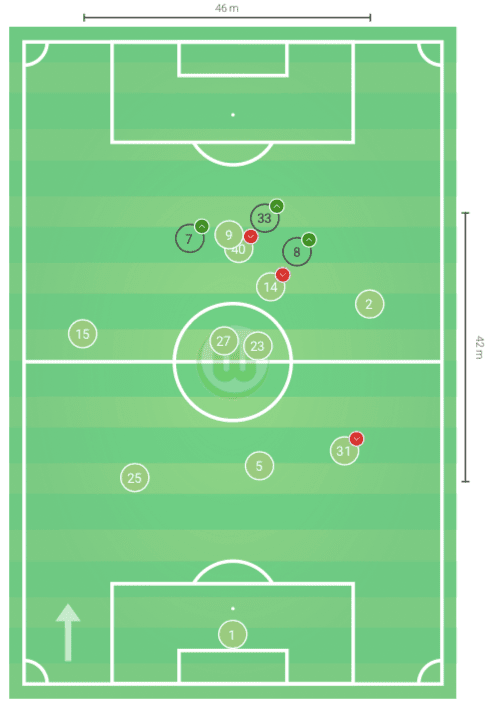
With their positional play, Wolfsburg could dominate the end of the second half in the opposition half. By occupying all of Bremen’s midfielders in the centre and the half-spaces, Wolfsburg enabled their wing-backs space on the flanks.
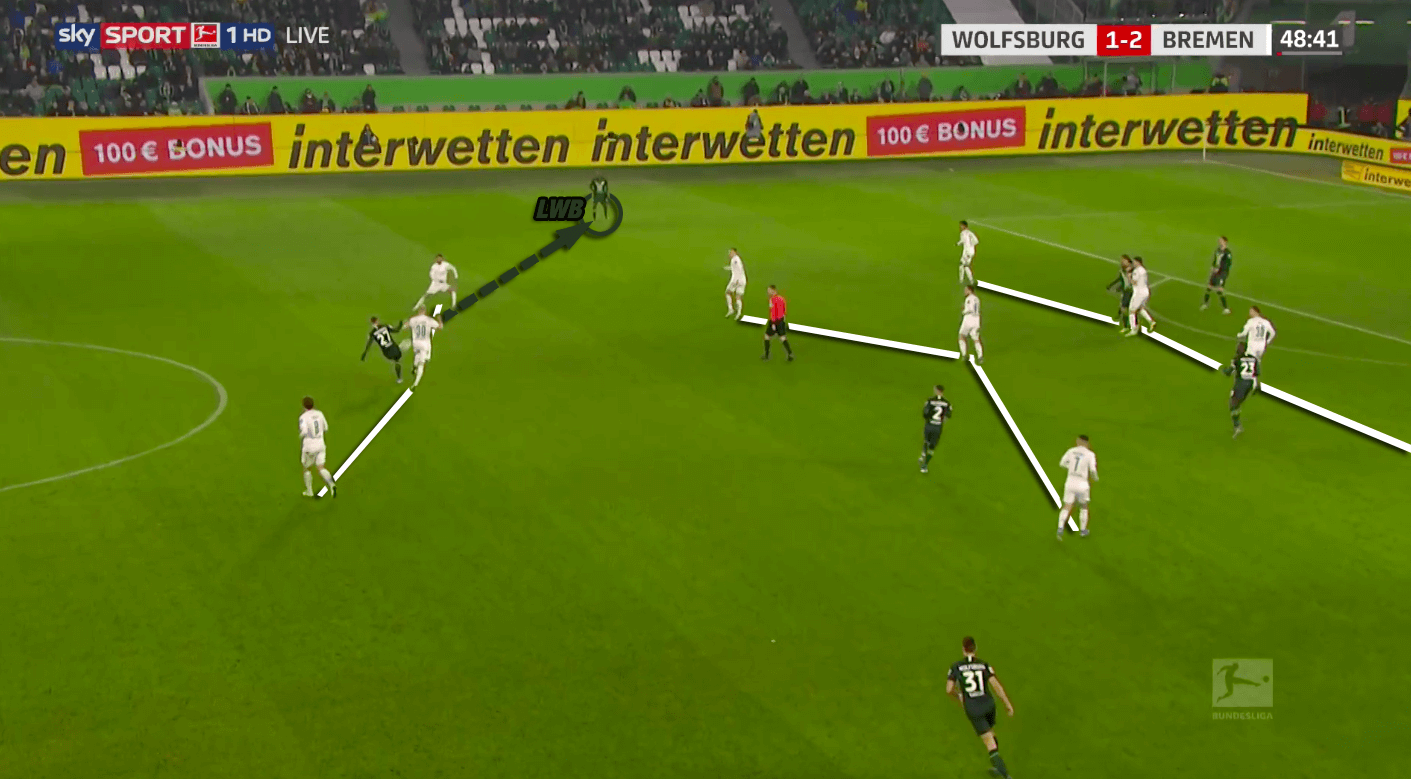
In general, Wolfsburg attempted to occupy the half-spaces and offer their defensive midfielders options to play into space between the lines. If one of their offensive midfielders dropped, their wing-backs occasionally moved into this area to receive the ball.
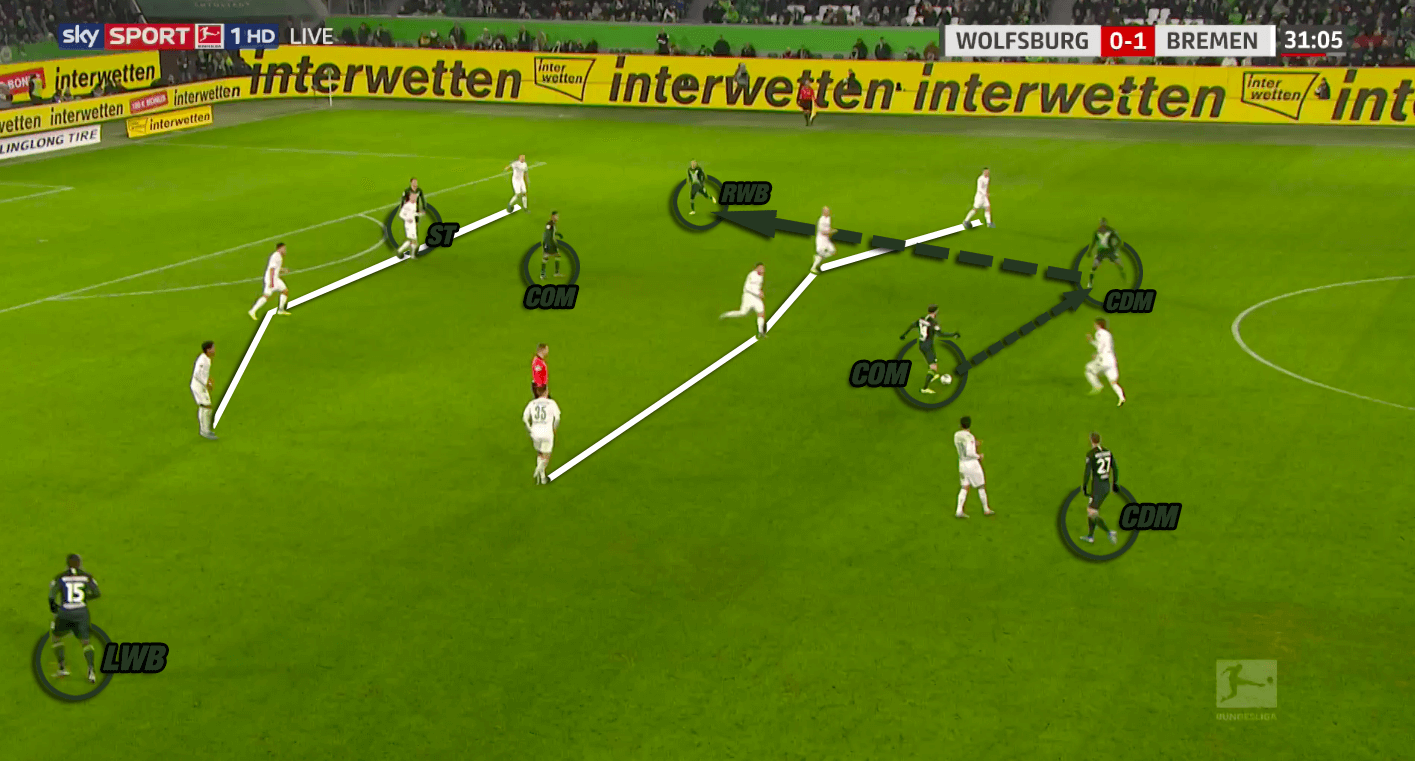
As a consequence, Glasner’s side often progressed up the pitch through the half-space before playing the ball out wide in the final third. This guaranteed that Wolfsburg’s attackers were already positioned in goal near areas when the wing-backs received the ball. Therefore, they could immediately send in crosses.
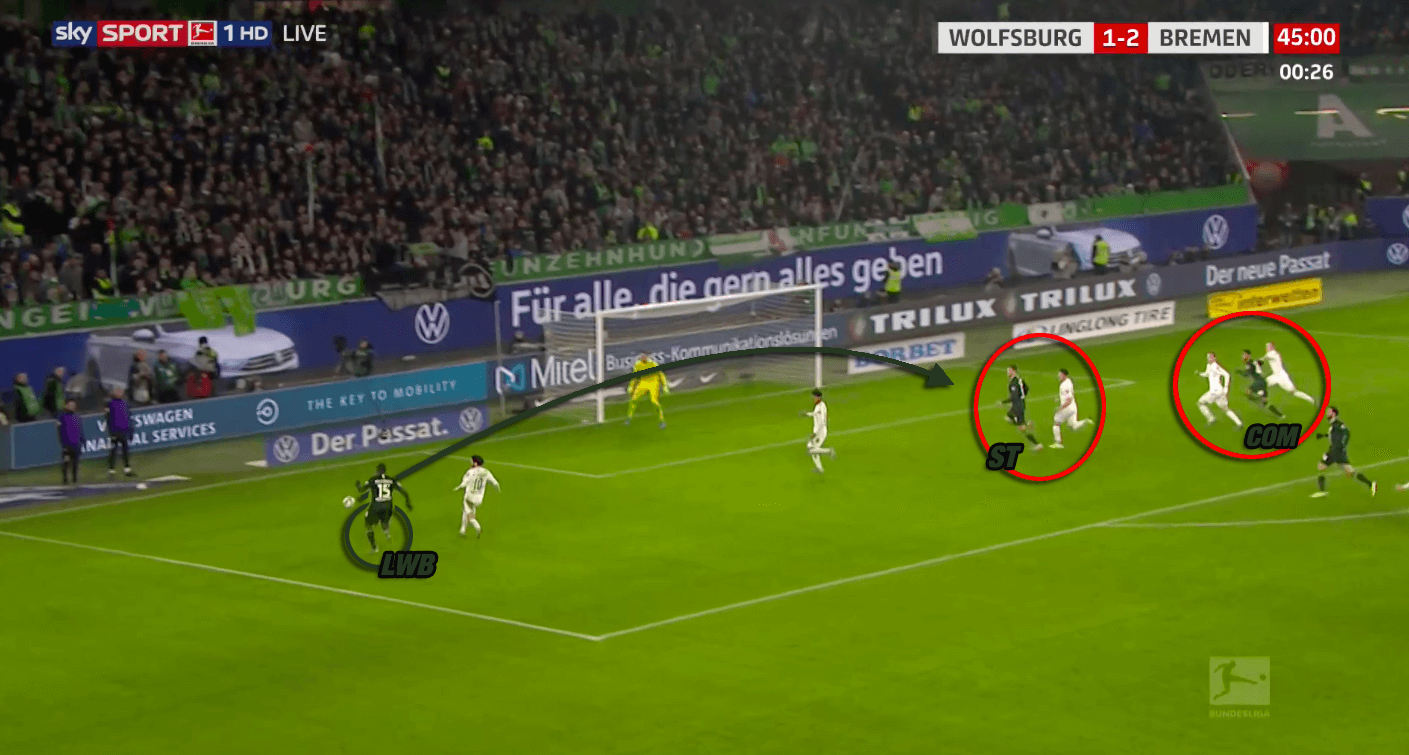
And although Werder were in superior numbers in the box in most of the cases, they were too far away from Wolfsburg’s attackers. This caused some dangerous situations. Nevertheless, due to a brilliant performance from goalkeeper Pavlenka and Wolfsburg’s missing accuracy the home-side could not make more out of these situations than to get some corner-kicks. One of these set-pieces resulted in Wolfsburg’s 1-1 equaliser though and brought them back into the game.
Werder’s agile front three
Werder’s main strategy was to get the ball towards their attacking trio. With Milot Rashica, Yūya Ōsako and Leonardo Bittencourt, Werder possessed both pace and dribbling ability in their attacking department. While Rashica and Bittencourt tried to bet behind Wolfsburg’s backline utilising their pace, Japanese false nine Ōsako often dropped to collect the ball in midfield.
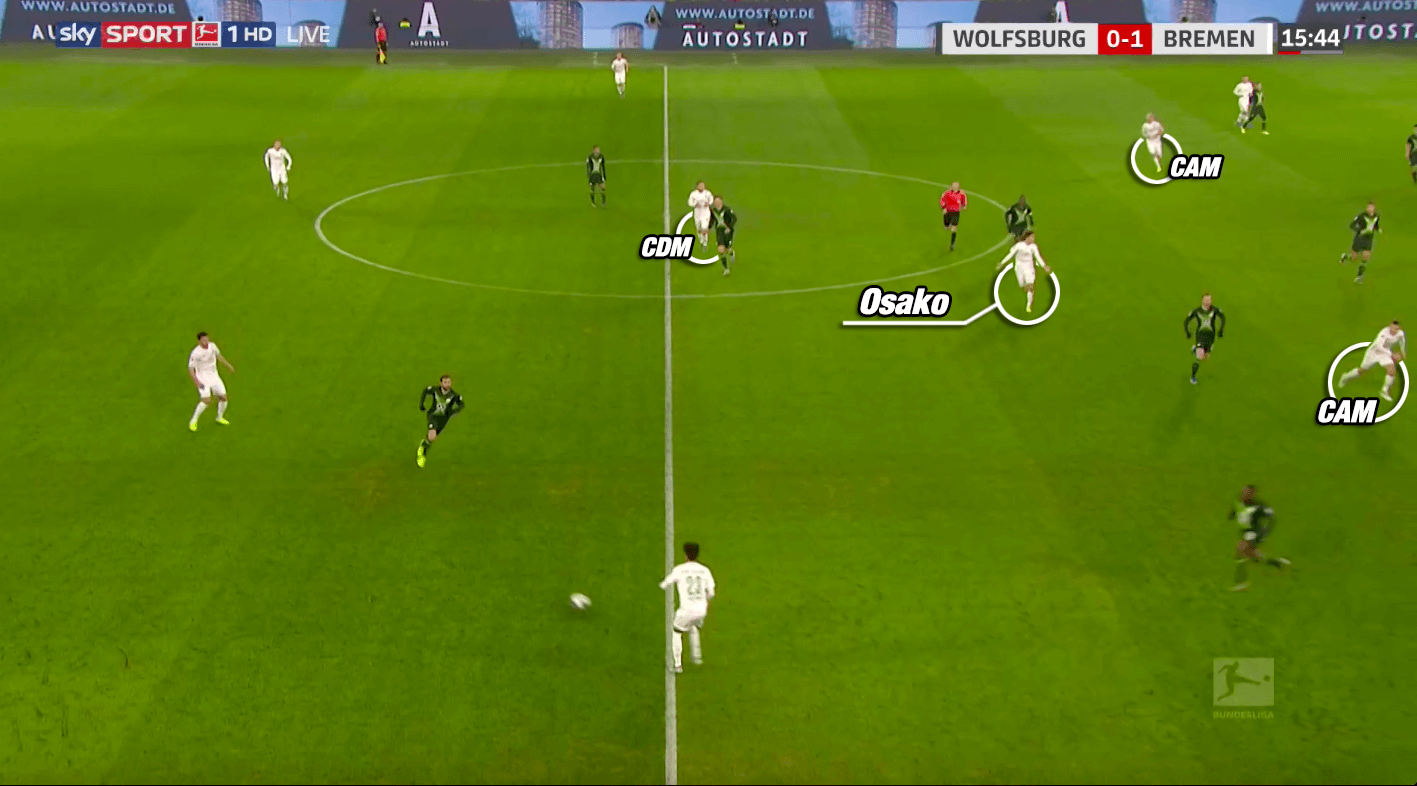
However, one defender of Wolfsburg’s back three often moved out to prevent Bremen’s creative attacker from turning. In some scenarios, they used tactical fouls in order to stop Ōsako and to reorganise defensively.
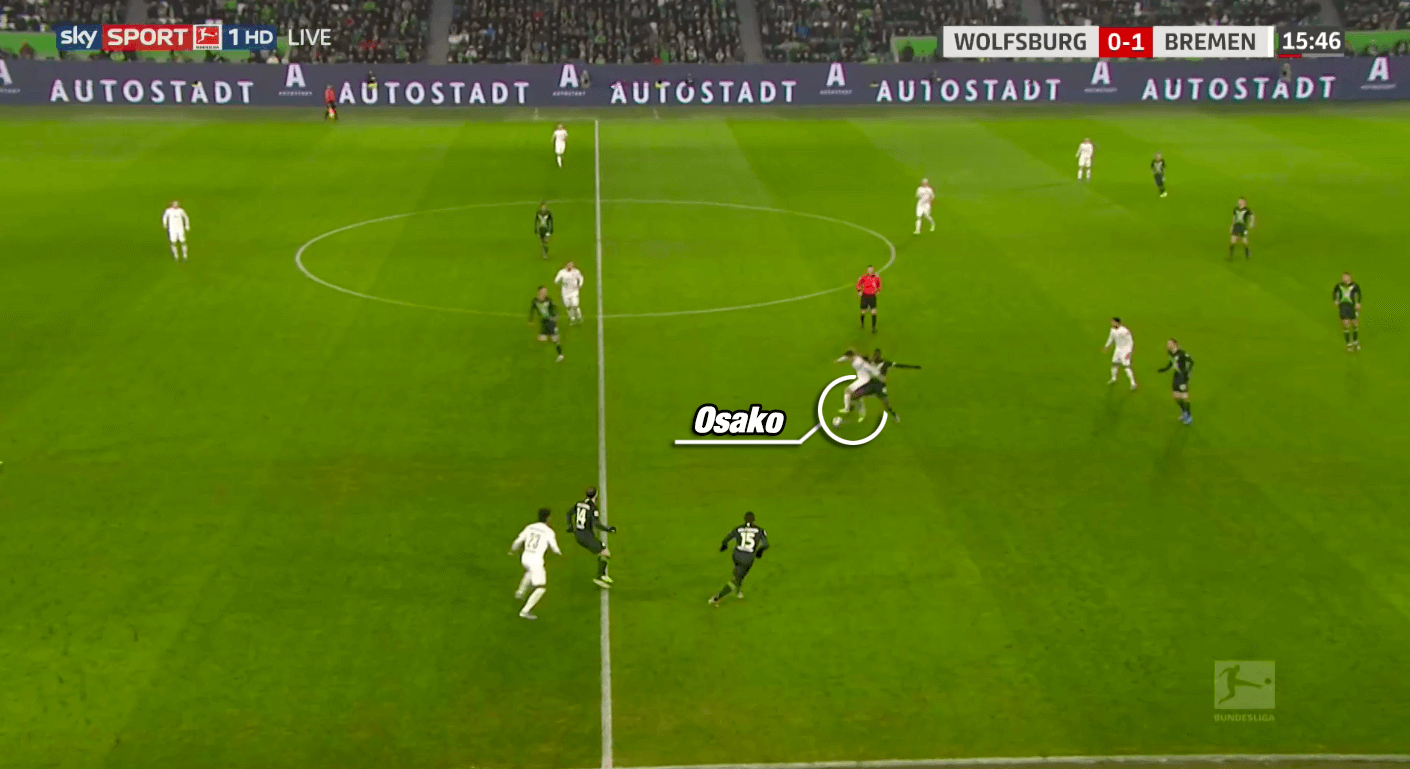
Whenever Ōsako had the option to lay the ball off to one of Bremen’s midfielders, Werder could get between the lines and progress up into the final third.
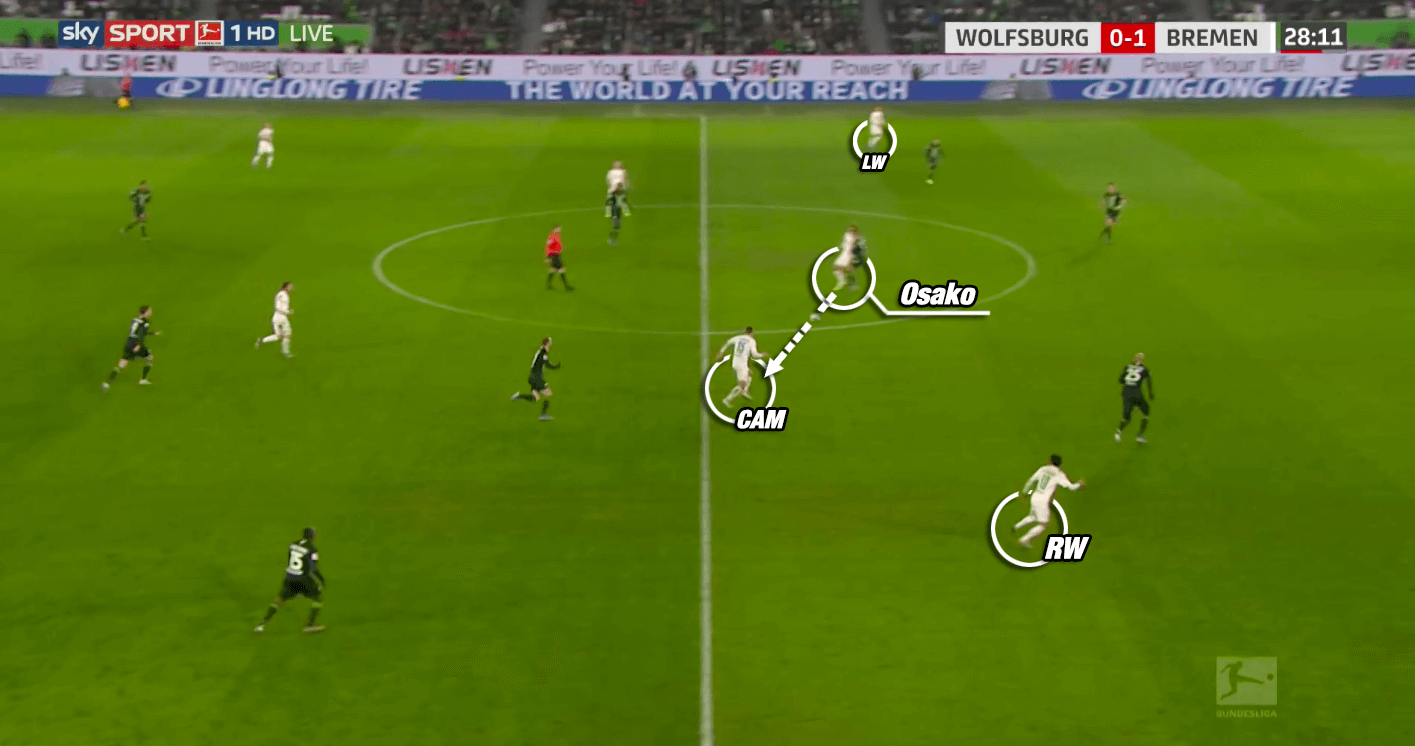
To create goal-scoring opportunities, Werder used in crosses from wide areas. In the first half, Rashica and left-back Ludwig Augustinsson played a vital role on the left-wing by sending in crosses.
Especially when Werder just regained the ball, these situations became dangerous. Werder scored the 2-1 with Bittencourt heading the ball into the net at the far post. Bremen’s attacker was left free as Wolfsburg’s back three shifted towards the ball side while their ball far wing-back could not track back Bittencourt.
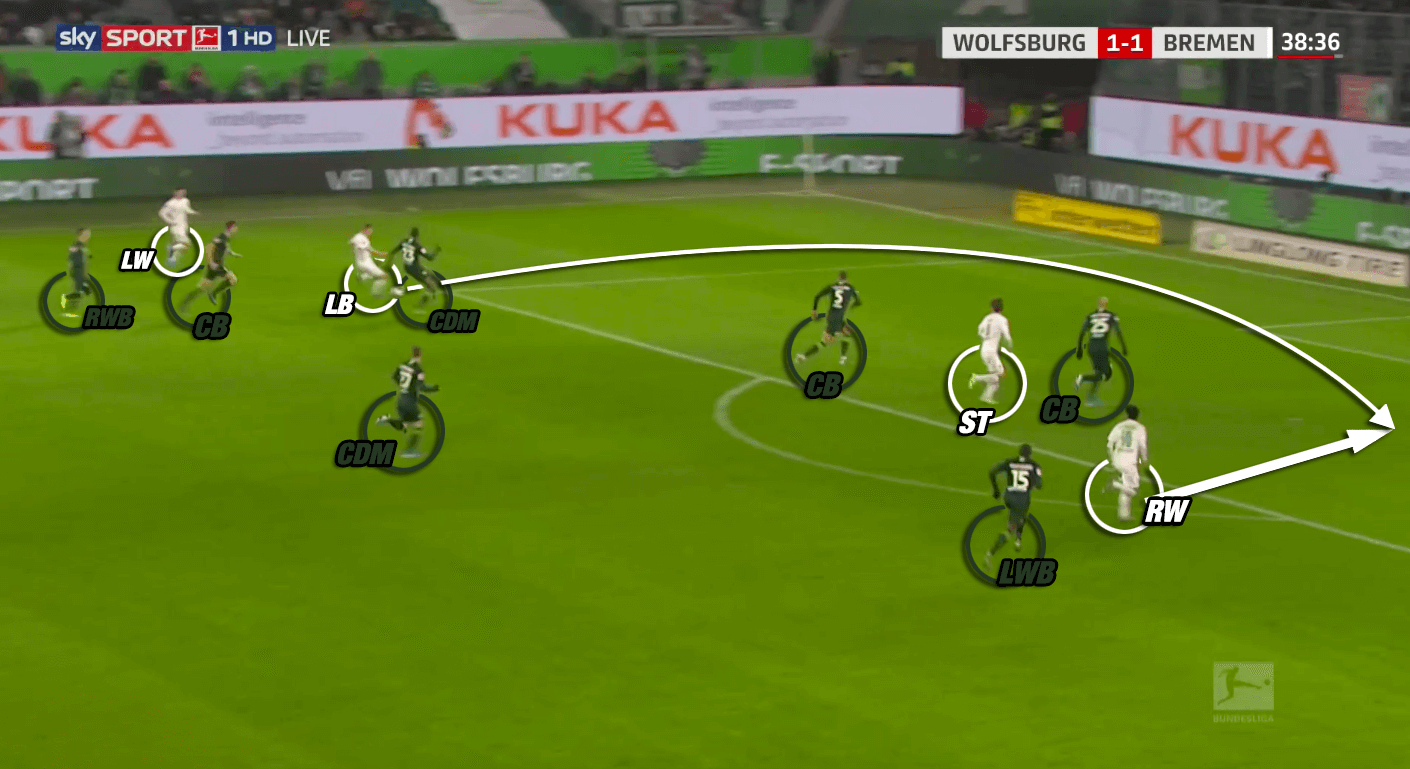
Werder’s press and their lack of offensive courage
In the opening stages of the match, Werder pressed from the front. By man-marking approach Maximilian Arnold, Bremen could decrease the influence of Wolfsburg’s defensive midfielder during the build-up.
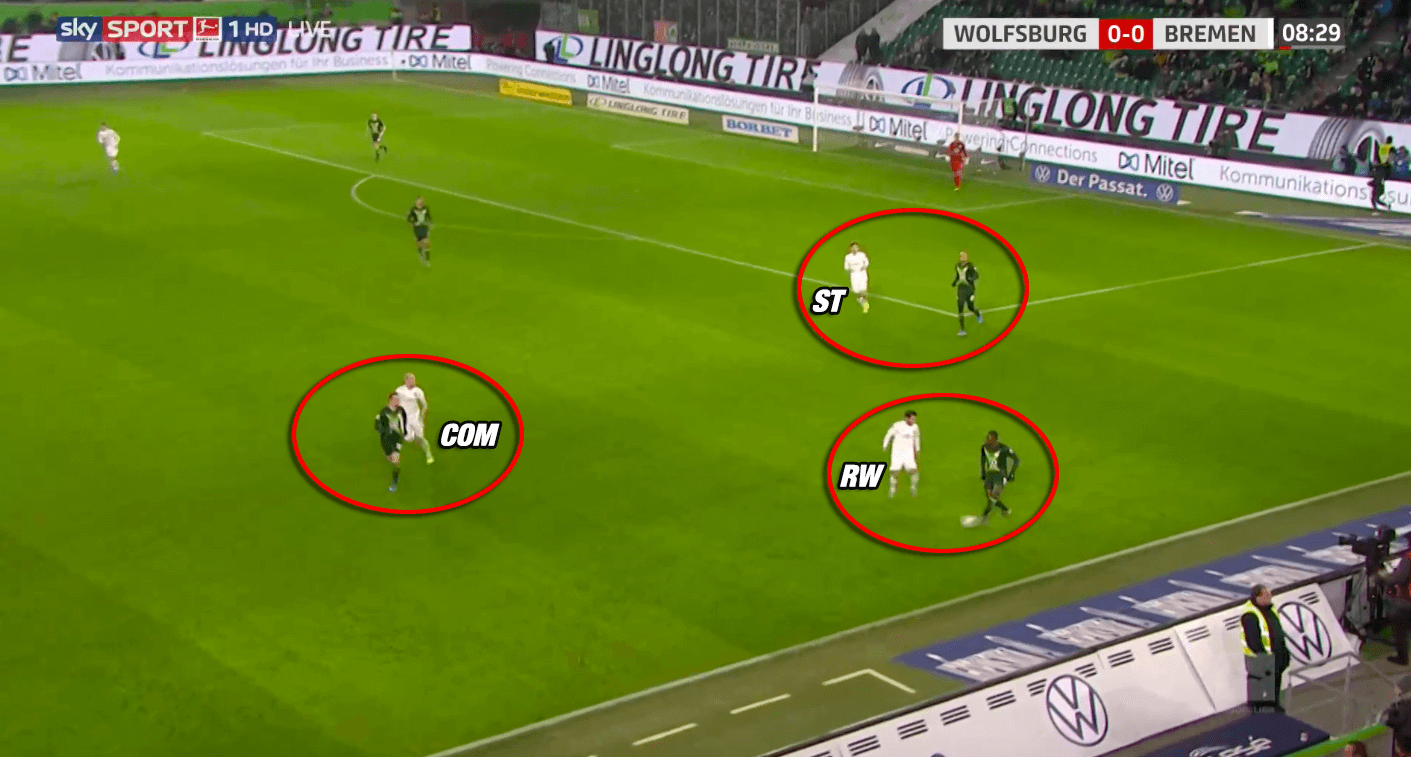
When being able to press Wolfsburg’s wing-backs and prevent them from playing forward, Kohfeldt’s side could often win the ball high up the pitch. This also introduced their second goal of the day, when Bittencourt scored after Rashica’s cross.
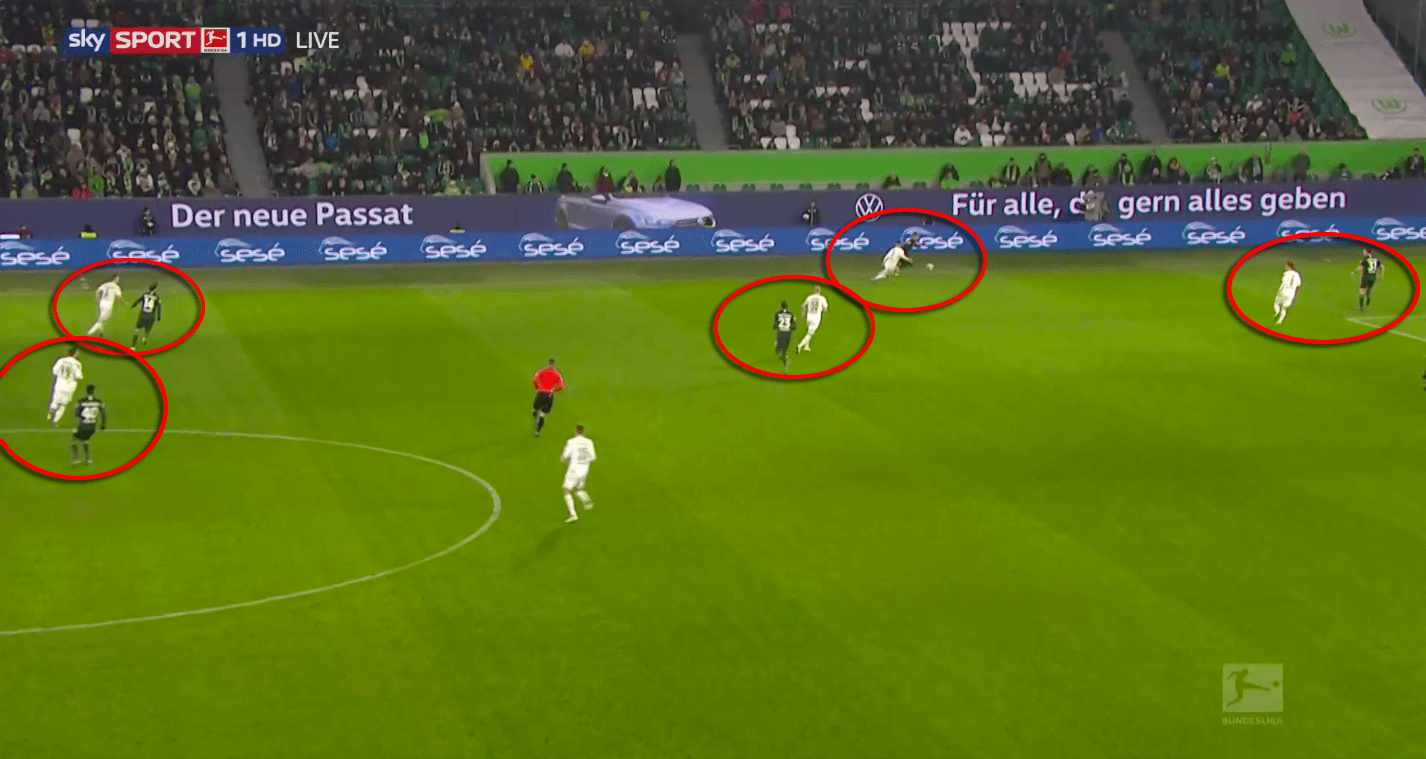
One of the weaknesses of Werder’s press, however, was that they were incapable of defending the ball far half-space. With the two defensive midfielders shifting towards the ball side and the ball far winger being positioned too high, Wolfsburg’s ball far advanced midfielder was left unmarked. That allowed Wolfsburg to play diagonally out of Bremen’s press in some situations.
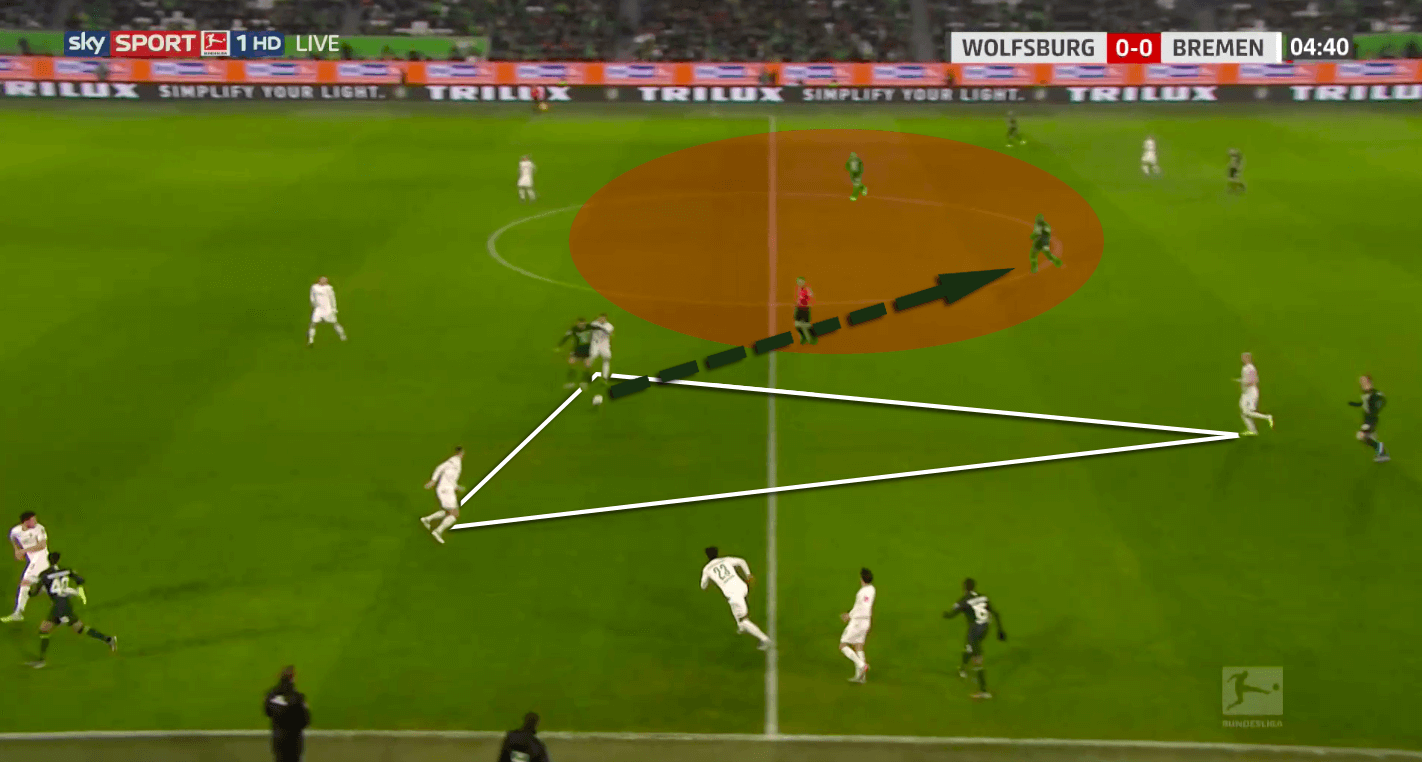
One of Bremen’s main problems throughout the match was the missing courage to combine in midfield. Often, Bremen played back passes instead of attempting to sustain possession in midfield.
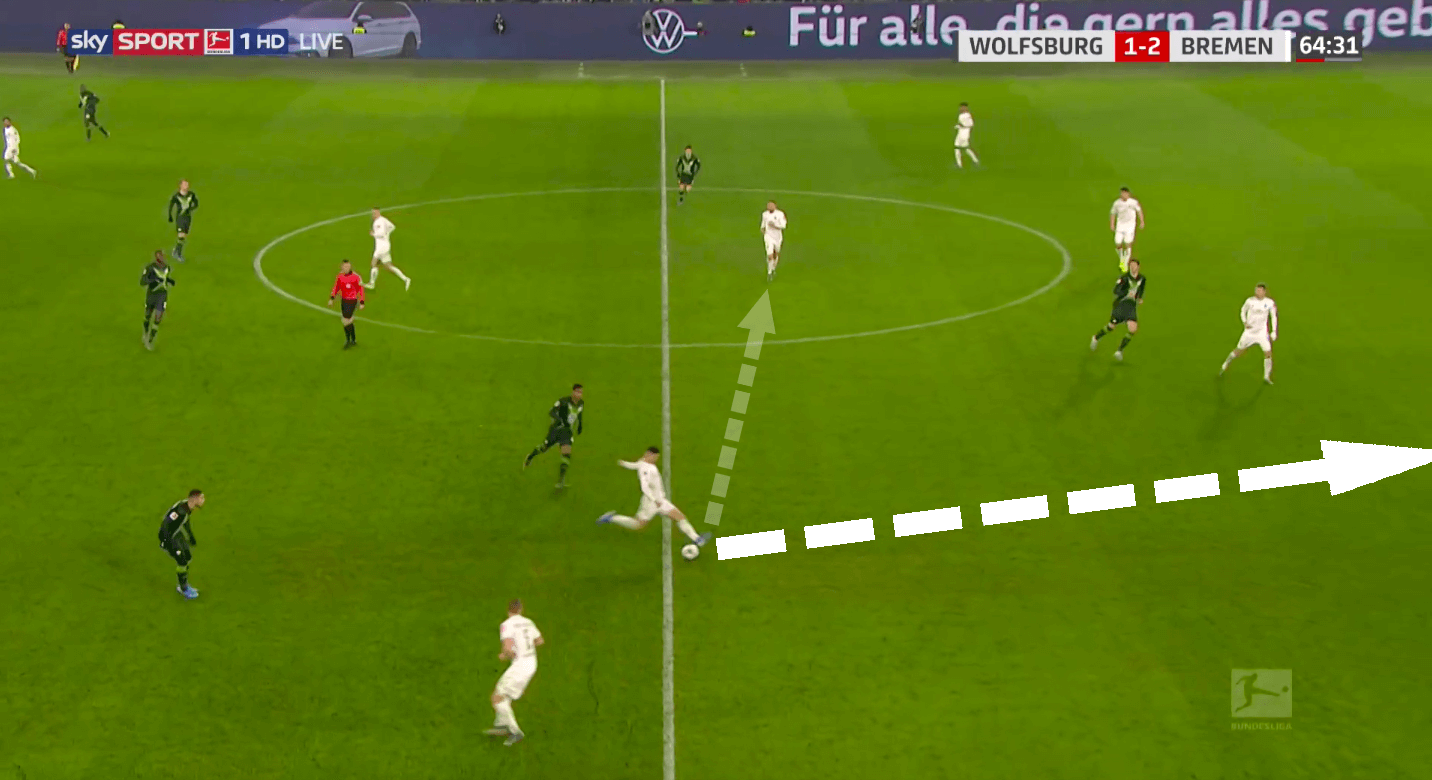
That enabled Wolfsburg to press the Werder high up the pitch and to force goalkeeper Jiri Pavlenka to play long balls.
Due to Wolfsburg’s focus to shift towards the wing when pressing wide, Werder were offered diagonal options.
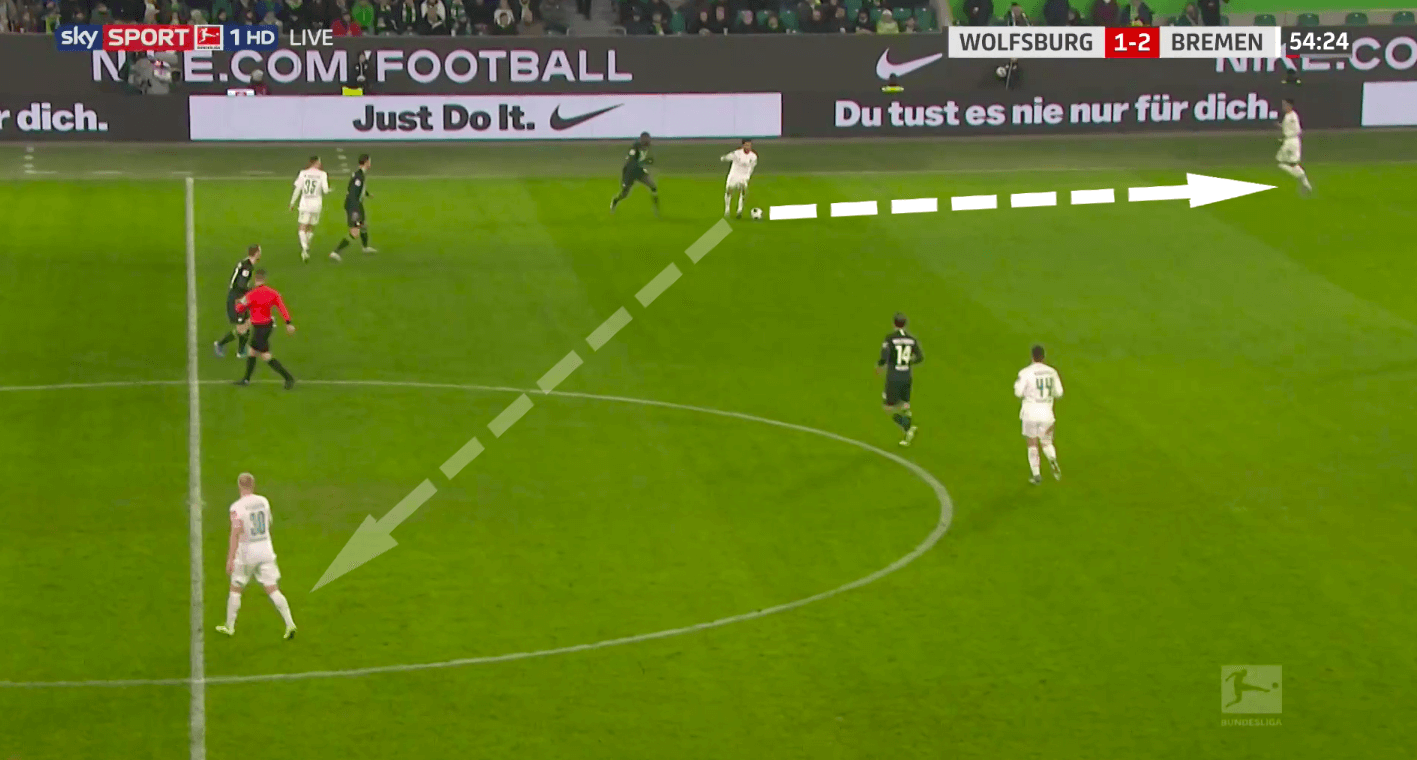
However, Werder decided to minimise the risk of losing the ball and to play rather safe passes instead. As Bargfrede played in central midfield instead of Nuri Sahin, Bremen also lacked the ball-playing abilities of the Turkish pivot in possession.
Both sides go all in
In the final stage of the game, both Glasner and Kohfeldt decided to change their tactical setups for more attacking power.
Wolfsburg changed their system to a 4-4-2 when they were 1-2 down. Just seconds after this change, they scored the equaliser in the 73rd minute.
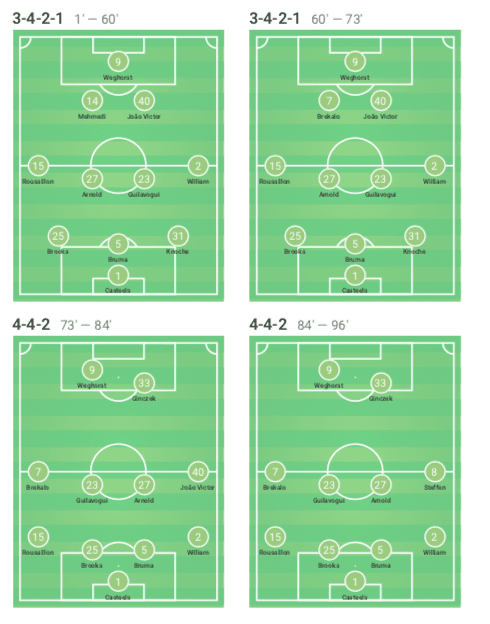
The 4-4-2 with the full-backs acting high like before when playing as wing-backs Wolfsburg them to commit more numbers in the opposition penalty area after breaking through on the wing. This forced Werder’s midfielders into deeper positions neglecting the space in front of the box.
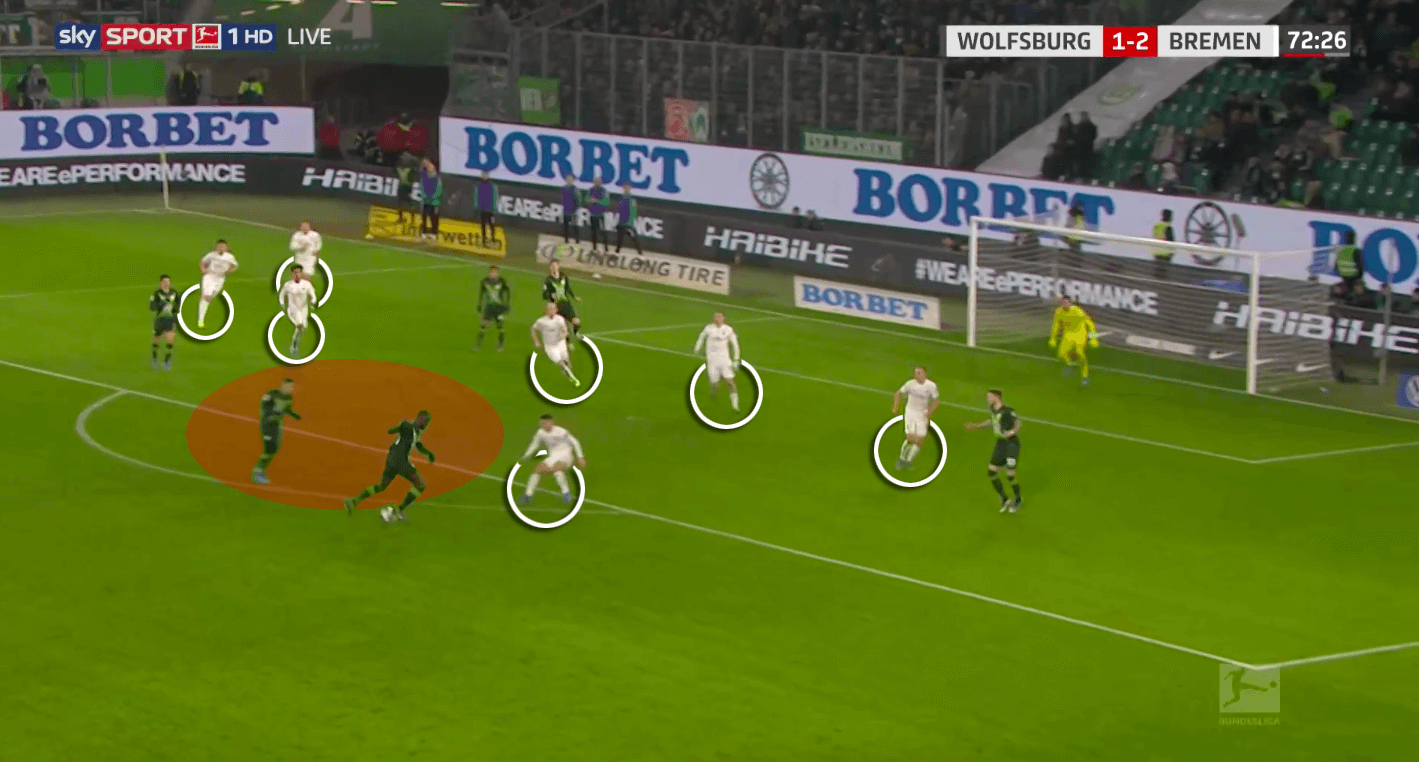
In the following of Wolfsburg’s equaliser, Werder changed to a back-three system. With American attacker Josh Sargent (substituted in the 76th minute) playing behind the striking-duo consisting of Claudio Pizarro (substituted in the 78th minute) and Milot Rashica, their shape turned into a 3-4-1-2.
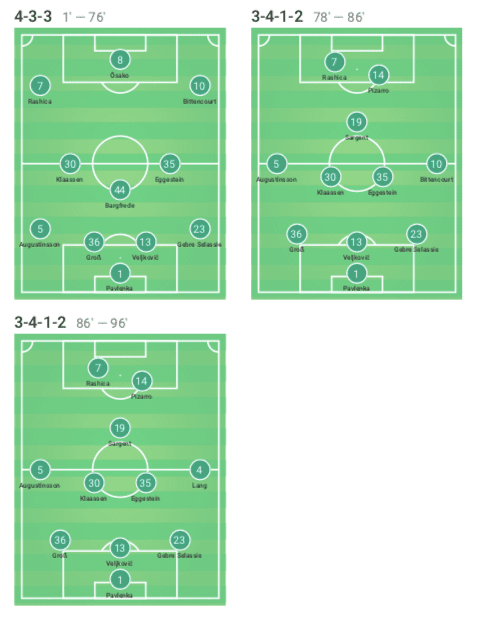
By playing with a back four and high full-backs, Wolfsburg took the risk to defend man-to-man in the back during defensive transitions.
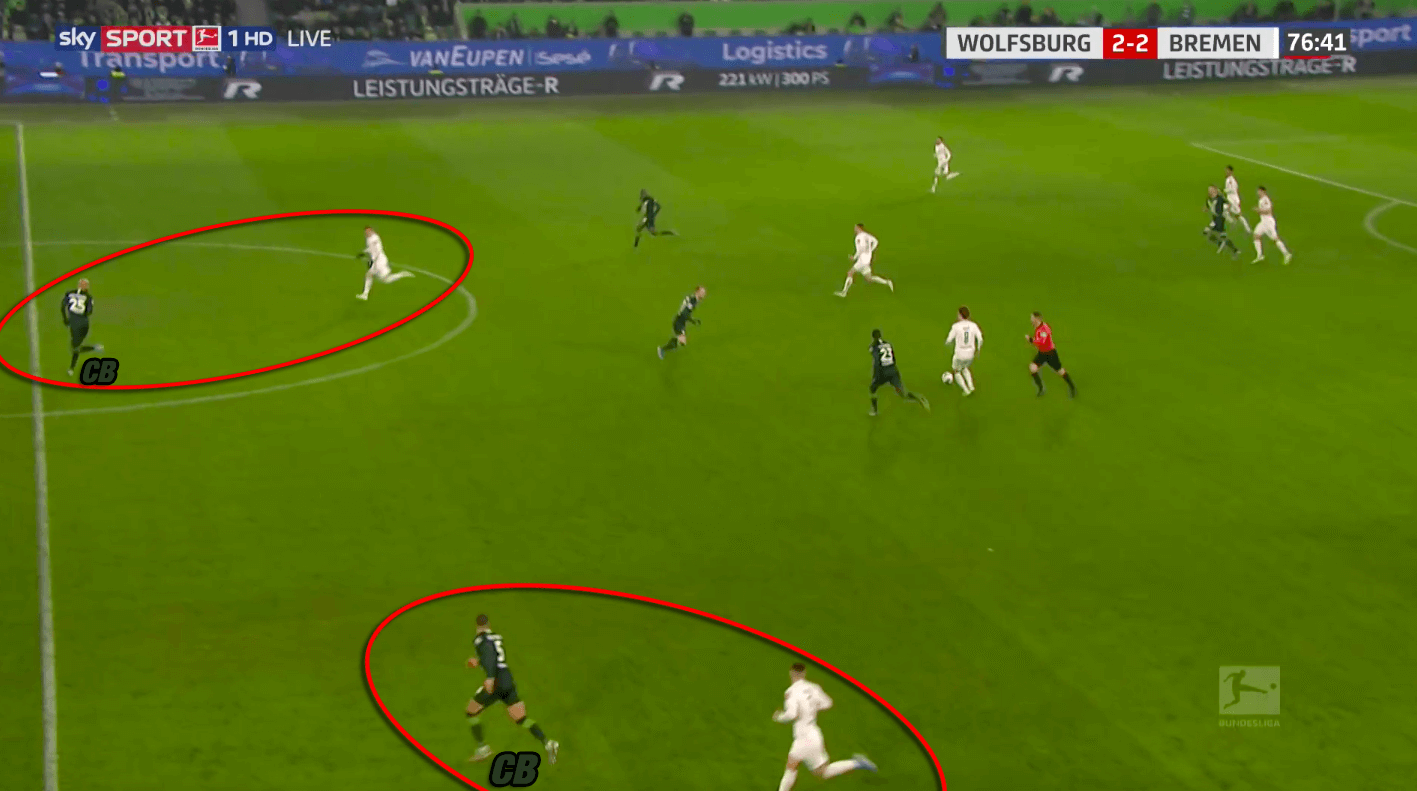
However, it was not Wolfsburg’s back line but their double pivot which allowed Bremen to score the 3-2 winning goal.
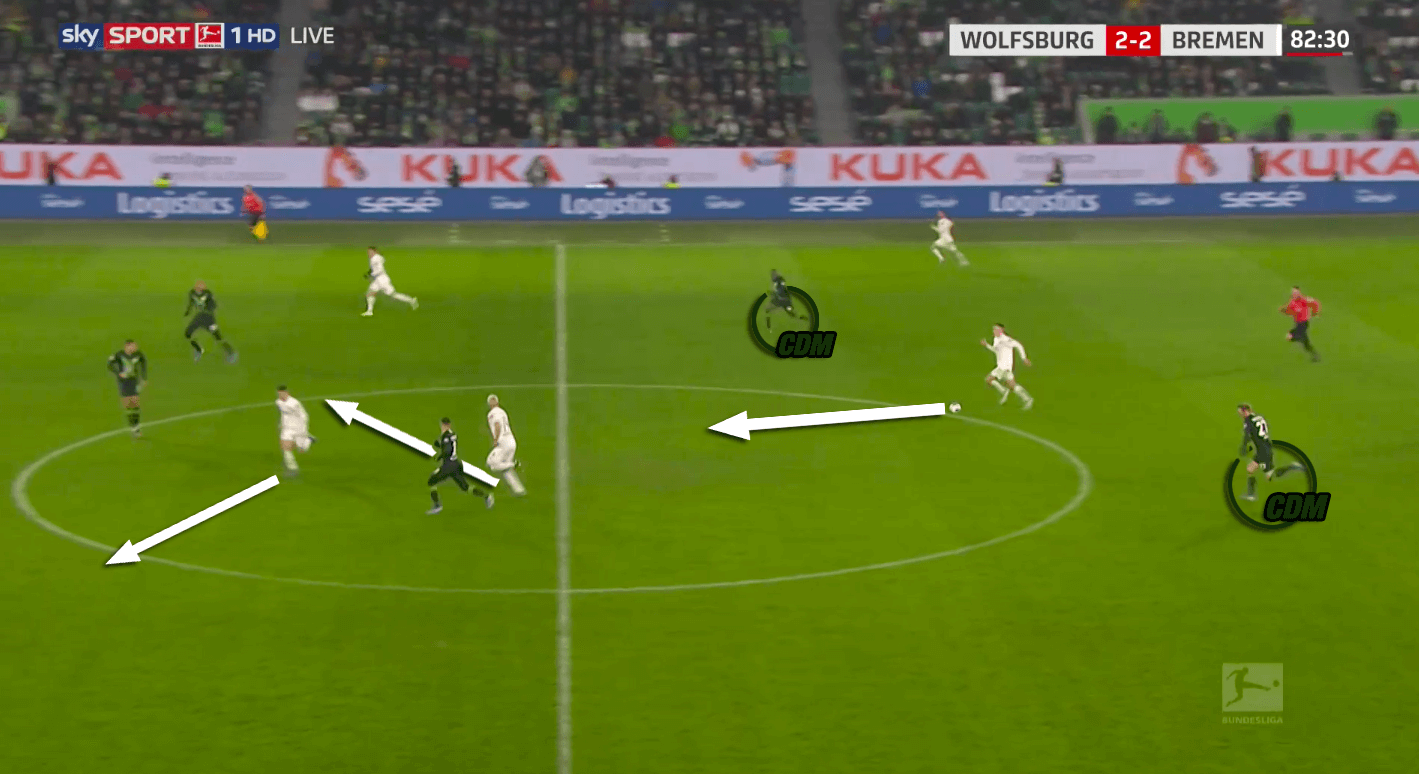
As Guilavogui and Arnold are positioned too far from each other, their is no central cover in front of the back line. That allows Werder to create a 4v3 situation and make use of Rashica’s pace with a simple forward pass.
Conclusion
All in all, it was a bit of a lucky win for Werder Bremen. As as our analysis has shown, Wolfsburg created promising scoring opportunities with their half-space combinations and following crosses. But Bremen’s pressing approach also led to some good chances.
In the end, Wolfsburg’s final offensive tactics offered Werder more space on the break which they used to score the final 3-2.

If you love tactical analysis, then you’ll love the digital magazines from totalfootballanalysis.com – a guaranteed 100+ pages of pure tactical analysis covering topics from the Premier League, Serie A, La Liga, Bundesliga and many, many more. Buy your copy of the November issue for just ₤4.99 here





Comments